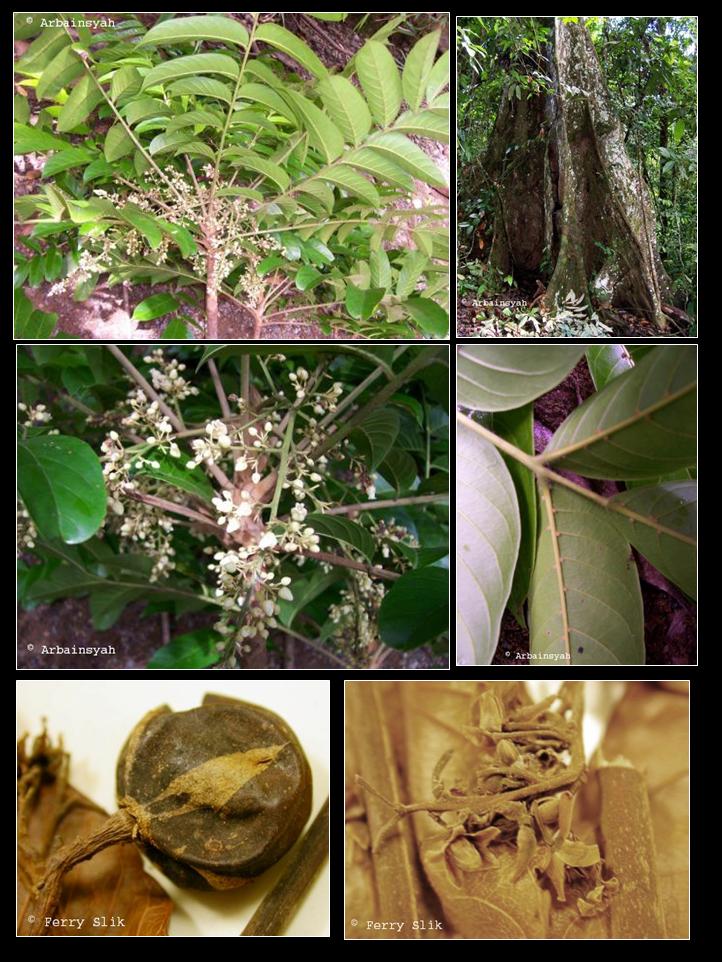Dracontomelon dao (Blanco) Merr. & Rolfe, Philip. J. Sc. 3 (1908)
(Local Philippine name for this plant species)Synonyms
Comeurya cumingianum Baill.
Dracontomelon brachyphyllum Ridl.
Dracontomelon celebicum Koord. [Invalid]
Dracontomelon cumingianum Baill.
Dracontomelon edule (Blanco) Skeels
Dracontomelon edule Merr. [Illegitimate]
Dracontomelon lamiyo Merr.
Dracontomelon laxum K. Sch.
Dracontomelon mangiferum (Bl.) Bl.
Dracontomelon mangiferum var. puberulum (Miq.) Engl.
Dracontomelon mangiferum var. pubescens K. & V.
Dracontomelon puberulum Miq.
Dracontomelon sylvestre Bl.
Paliurus dao Blanco
Paliurus edulis Blanco
Paliurus lamiyo Blanco
Pomum draconum Rumph.
Pomum draconum silvestre Rumph.
Poupartia mangifera Bl.
Description
Emergent tree up to 56 m tall and 102 cm dbh. Stipules absent. Leaves
alternate, compound, penni-veined. Flowers ca. 9 mm in diameter,
white-yellow-pinkish coloured, placed in very long panicles. Fruits ca. 20 mm
long, yellowish fleshy drupe.
Ecology
Only in undisturbed everwet forests, or forests with a very short dry
season. Often growing along river banks. Growing up to 1000 m altitude, but usually below 500 m.
Uses
The timber is soft and light and not very durable. It is used for veneer,
panelling, furniture, flooring, matches and boxes. The fruit is edible, although
not very popular. Flowers and leaves can be eaten as well. The bark could be of
medicinal value.
Distribution
Eastern India, Andaman Islands, South China, Myanmar, Indochina, Thailand,
Peninsular Malaysia, Indonesia, Philippines, New Guinea and the Solomon Islands.
Local names
Borneo: Djakan; Ngkung; Sangkuang; Sangkuwang; Sarunsab; Sengkuang; Singkuang;
Sorosob; Suronsub; Talantjap; Tarosoup; Tehrengzeb; Ungkawang; Urui.
